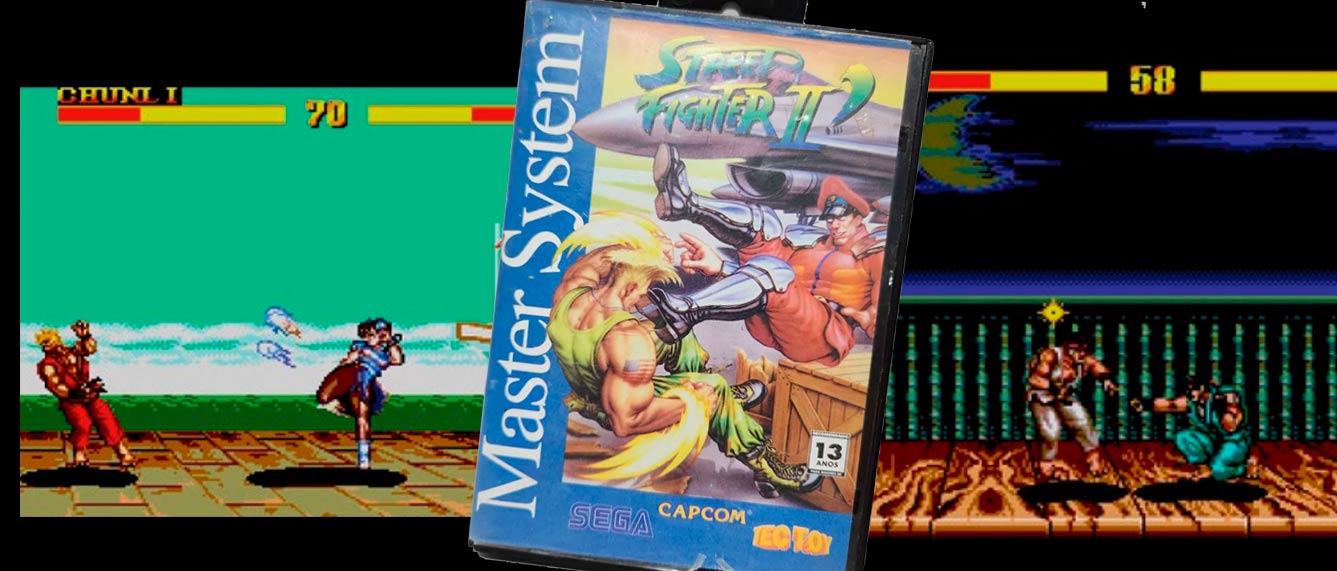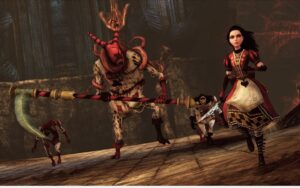
In the 1980s, Japanese SEGA signed partnerships to distribute its consoles in different regions of the world. In the United States, for example, the alliance was with the toy manufacturer Tonka. However, no partnership was as curious, creative and daring as the one that occurred in Brazil: the union between SEGA and TecToy.
The origin of a historic partnership
This partnership is full of stories that seem like urban legends, but that really happened. One of those singular moments was the release of a unique version of Street Fighter II in 1997, for the Master System.
TecToy’s strategy in its golden years of partnership with SEGA was genius in many ways. Genius that, in part, can be attributed to the famous “Brazilian way”.
As I already said in another article about the arrival of Atari in Brazilat the time of the market reserve, which operated relentlessly between 1984 and 1992, something close to a “official piracy”. Brazilian companies brought products from abroad and manufactured them locally, which contributed to a flood of consoles that were clones of the original options.
Undoubtedly, piracy was responsible for allowing many Brazilians to have their first contact with games, computers and other technologies. In this scenario, TecToy, which placed its own versions of foreign products on the market, consolidated its name as one of the biggest drivers of the gamer market in the country. She was directly responsible for making the Master System the first console for many Brazilians (including me!).
TecToy’s first major initiative was the sale of a SEGA laser game called Zillionbased on a Japanese anime. The game ended up selling more units in Brazil than in Japan, showing the company’s potential in the local market.

Investment in the Master System

This initiative paved the way for TecToy to follow its entire investment in the Master System as a platform. An investment that was not just in the equipment itself, but also involved millions in advertising and even the creation of a loyalty program, the Master Club.

TecToy was so successful with the Master System in Brazil that it managed to capture between 75% and 80% of the 8-bit console market in the country. Even with the launch of its successor, the 16-bit Mega Drive, the company continued to support the Master System.
Street Fighter II on the Master System: An Unbelievable Feat

From this context, we can understand how Street Fighter IIa game originally for 16-bit consoles, ended up on an 8-bit platform, six years after its release.
According to some interviews, Heriberto Martinez, then engineering manager at TecToy, expressed the company’s great desire to bring the game to the Master System. However, SEGA considered this impossible for technical reasons.
SEGA’s refusal, however, did not demotivate TecToy. The Brazilian company extracted the arts from the version of Street Fighter II for the Mega Drive and carried out all the adaptation and compression work so that the game could be used on an 8 megabyte cartridge — a significant leap, considering that many games on the console took up just 1 MB of memory
In terms of compatibility, another unique feature of Tectoy. The game was made to run only on the Master System III Compact.
Capcom’s technical work and recognition

In total, the TecToy team spent almost a year to extract the graphic material, make adjustments and code the game for the Master System. Stefano Arnhold, founder and president of TecToy until 2009, even presented the game to a Capcom representative. He hid the Master System from the representative’s view and gave him Mega Drive controls to test the game.
The Capcom representative found the result strange, as it did not seem consistent with a 16-bit console. Arnhold then revealed that the game was running on an 8-bit console, which left him impressed. The game received approval from Capcom!
Limitations and adaptations

The feeling of strangeness is clear when we compare the original version of the game with the one that TecToy delivered for the Master System. Several cuts needed to be made, starting with the number of fighters. Instead of the original 12, TecToy’s version, based on Street Fighter II: Champion Edition e Super Street Fighter IIhad only 8 fighters. E. Honda, Zangief, Dhalsim and Vega were left out.

The scenarios also suffered a drastic reduction in details. Some changed radically from the original visual concept. Furthermore, TecToy had to adapt the gameplay to work on a controller with just two buttons.
The game was also not completely localized: some parts, such as the menu, were in English, while others were in Portuguese, and executing the special moves was complicated. The sound part was also very lacking.
On the other hand, the level of detail in the sprites was impressive, considering the context of this version.
You should read it too!
The King of Fighters 94: SNK’s strategy that put Brazil in the game
AI imagines a Street Fighter film set in the 1950s
A valuable collector’s item
TecToy’s hard work resulted in an exclusive version of Street Fighter II to Brazil. As with many products that have curious stories like this, this title is now coveted by retro game collectors around the world. The resale price is high. In an eBay ad, for example, the seller asks $249 for a copy.

In another advertisement on Mercado Livre, the game is being sold for R$1,198.

Next to the version of Street Fighter II for Game Boy, this option created by TecToy forms one of the two versions of the game aimed at 8-bit platforms.
Did you already know the story of this version of Street Fighter II for the Master System? Comment below. If you wanted to test the game, this link you can run it directly through the browser.
Source: https://www.hardware.com.br/artigos/street-fighter-ii-tectoy-master-system/


